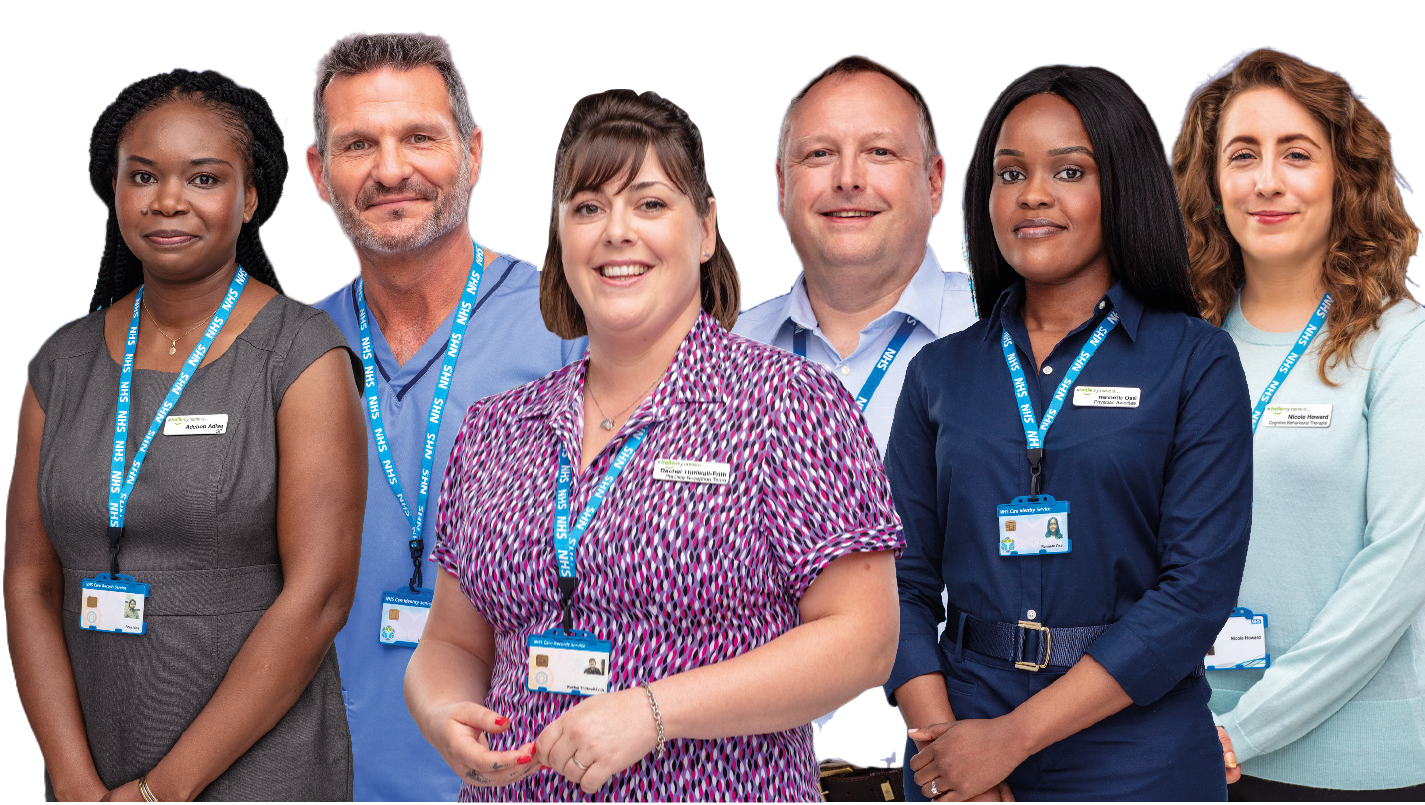Question and Answer: Adult Autism and ADHD Assessment: North Yorkshire and York
October 2023
Q: Why does it take so long to get an assessment for autism or ADHD in North Yorkshire and York?
A: We have seen a significant rise in the number of referrals and waiting times for adult assessments for both autism and ADHD in North Yorkshire and York because many more people are coming forward for an assessment.
In 2021 when we last reprocured the adult ADHD and autism assessment service there were around 60 referrals a month. Now the number has risen to over 300 referrals a month.
This increase in referrals and the related waiting times (in April 2023 the average wait for an adult autism assessment was 127 weeks, for adult ADHD 118 weeks) have had a negative impact on those waiting for assessment and we are looking for ways to transform the process to improve access to assessments and support people while they wait.
Q: Are long waits to assessment for adult autism and ADHD specific to North Yorkshire and York?
A: No, our local experience is consistent with both the regional and national picture. Across the country the rise in referrals for assessment over recent years far exceeds the available capacity. Many areas within the UK are experiencing long waits for assessment.
Q: What is the current model of accessing assessments for autism and ADHD for adults in North Yorkshire and York?
A: Until March 2023 adults in North Yorkshire and York were referred for an assessment by their GP. Assessments were then progressed by a specialist provider in chronological order.
Since March we have been piloting a different approach to assessments which aims to prioritise assessment for those that have the greatest clinical need first through the use of criteria developed by health specialists. The pilot approach also aims to give practical support to everyone waiting for an assessment earlier than in the past.
Under the approach being piloted people are given access to an online tool (the North Yorkshire & York Platform for Adult Autism and ADHD Referrals). Everyone who completes the modules included in the platform are given a unique profile that can be used in day-to-day life and may also help with advice on attention and concentration, emotions and mood, creativity and problem solving, social skills, communication and sensory processing. The more information we receive through the profiler the more we will know about the specific support and educational resources that people in North Yorkshire and York would find helpful.
Q: Why was this approach to assessment introduced?
A: We would like to reduce the waiting times for assessments, especially for those people with the greatest clinical need, and provide advice more quickly for everyone seeking health and care advice for their needs while they wait.
The approach we are piloting will help us connect people with support more quickly through an online neurodiverse screening tool. It will also help us see more people by gathering as much information from people as possible prior to an assessment. This will help ensure that the time during assessment is used most effectively which will enable more assessments to take place. Finally, it will help us understand more about the specific needs within our community so we can design additional resources based on this improved knowledge.
The pilot aims to identify those most at risk and channel them towards an intervention with the specialist provider, while allowing others to access help at a much earlier stage through an online platform, which provides immediate support from the point of referral. Prior to the introduction of the pilot, all referrals were assessed in chronological date order and there was no system for identifying those people who needed help more urgently. This pilot reflects a shift in focus to a needs-based service.
Q: Under the pilot approach will everyone have access to an assessment?
A: Under the pilot approach no one will be denied an assessment. Everyone registered with the online tool will be offered the opportunity to remain on the waiting list and based on their needs will have their priority updated for assessment or offered/signposted to appropriate relevant support such as on attention and concentration, emotions and mood, creativity and problem solving, social skills, communication and sensory processing. We are committed to developing solutions which are better able to meet the increased demand, and the guidance provided through the neurodiverse screening tool is intended to support people in the here and now. However, please be aware that prior to this pilot there already were long waits for assessment. There is a waiting list for every stage of the assessment process, and we are working through it as fast as we can.
In practice those with a less severe clinical need (green or amber priority referrals) may be overtaken on the waiting list by those with priority need (red priority referrals). Better understanding of any potential impact of this is one of the reasons we are piloting the approach prior to making any final decisions about future models.
Q: Why was the pilot approach extended?
A: We first introduced the pilot from late March through to late June 2023. At the end of this three-month period, we realised that we needed more information from both the clinical systems and people with lived experience before we could fully understand how it was working and what adjustments would be useful. The pilot period is now due to end next year (2024).
Q: What are the criteria which are being used to identify red priority referrals?
A: Since the pilot started the criteria has been adapted in response to feedback from people who have sought assessment. From October 2023 the criteria are:
- Direct referrals from the Community Mental Health Team:
- people under the care of community mental health teams where it is identified there are co-occurring neurodevelopmental conditions and/or where the patient has support needs arising from undiagnosed neurodiverse conditions that overlap with symptoms of mental health problems.
- and where this creates barriers to making a diagnosis, and for the service to appropriately manage the patients' mental health.
- Risk of being unable to have planned life-saving hospital treatment, operations, or care placement.
- Imminent risk of family court decisions determined on diagnosis e. g family breakdown, custody hearing.
Q: How is the criteria for assessment applied?
A: The criteria for assessment is applied through use of an online tool. People are given access to the platform by their GP and are then guided through a series of modules. These modules have two purposes. The first is to evaluate each individual's experience against the assessment criteria to triage priority for assessment (this will be red, amber or green), the second is to provide practical support and guidance for individuals waiting for an assessment.
Q: How will I know if I meet the criteria for a red priority referral?
A: A message will appear on the platform to notify you if your referral has been sent to the Retreat (the specialist assessment provider) for triage. If so, it will also open an additional module for you to complete.
Q How will I know if I have not met the criteria for a red priority referral?
A: A message will appear on the platform to notify you that you have not met the criteria for immediate referral to The Retreat. You will be invited to complete the neurodiverse screening modules.
Q: What should I do if I do not meet the criteria red priority for referral?
A: You will be invited to complete the neurodiverse screening modules. You will be given the option to remain on the waiting list. Your unique profile that is produced by the tool can be used in day-to-day life whilst you wait.
The modules in the tool have been designed to help you understand your individual neurodiversity and aims to identify your strengths and challenges and give you the tools to achieve your potential. We advise you give sufficient time to consider and respond to the questions. Your neurodiverse report is generated based on your responses to each module and will provide support and signposting to organisations tailored to help you maximise your strengths and address your challenges.
We recognise that there can be significant distress or anxiety while waiting for assessment and we aim to connect people with support and services which can assist them while they wait for their clinical appointment. This can include connecting people with peer groups, skills support or learning. The more information we receive through the profiler the more we will know about the specific support and educational resources that people in North Yorkshire and York would find helpful.
Q: Where should I go if I want to know more about the online tool?
A: You can find out more about how the online tool works on our website (https://www.valeofyorkccg.nhs.uk/adult-adhd-and-autism-assessment/).
Q: What do I do if my needs change?
You can discuss any change in circumstances with a GP. If you feel adversely affected by not receiving a referral and your symptoms are still having a significant impact on your daily life we recommend you discuss this with a GP.
Q: The use of an online tool does not work for everyone, what other options are available?
A: The Retreat will accept direct referrals from GPs by exception, using the current referral form, for people with a learning disability and where the GP has determined immediate risk and need for urgent assessment. In addition, First Contact Mental Health Practitioners in Primary Care can support any person access and complete the online neurodiverse screening tool.
Q: Even with the proposed new approach some people will be waiting a long time for assessment, what are you doing to improve access to assessments?
A: We continue to work with our partners to see what opportunities there may be to reduce the length of time people may have to wait. We expect time needed for diagnostic appointments will reduce because of increased information gathered in advance, which will enable us to see more people more quickly. We also expect that the volume of people being referred for assessment will stabilise in the future, but we may not have yet seen the peak.
We know that there can be significant distress or anxiety while waiting for assessment and we aim to connect people with support and services which can assist them while they wait for their clinical appointment. This can include connecting people with peer groups, skills support or learning.
We would also like to see a service that goes beyond a pure diagnostic service, and we are hoping to work with the community to develop this.
Q: What is the "Do IT Profiler"
A: The Do IT profiler is an online tool interactive tool which aims to connect people with support and guidance. The platform used in North Yorkshire and York is similar to, but different, from the Do IT profiler as it includes additional modules within the tool designed by clinicians and professionals to help determine eligibility for referral based on three assessment criteria, with patients who meet one or more of these referred directly for assessment.
Everyone who completes the modules in the online tool will also receive immediate functional guidance and a unique profile describing strengths, challenges, and the skills to develop at home, socially and in the workplace. This will enable us to connect everyone with beneficial support much more quickly from point of referral. People who do not meet the criteria will be offered the opportunity to remain on the waiting list and based on their needs will have their priority updated for assessment or offered/signposted to appropriate relevant support.


